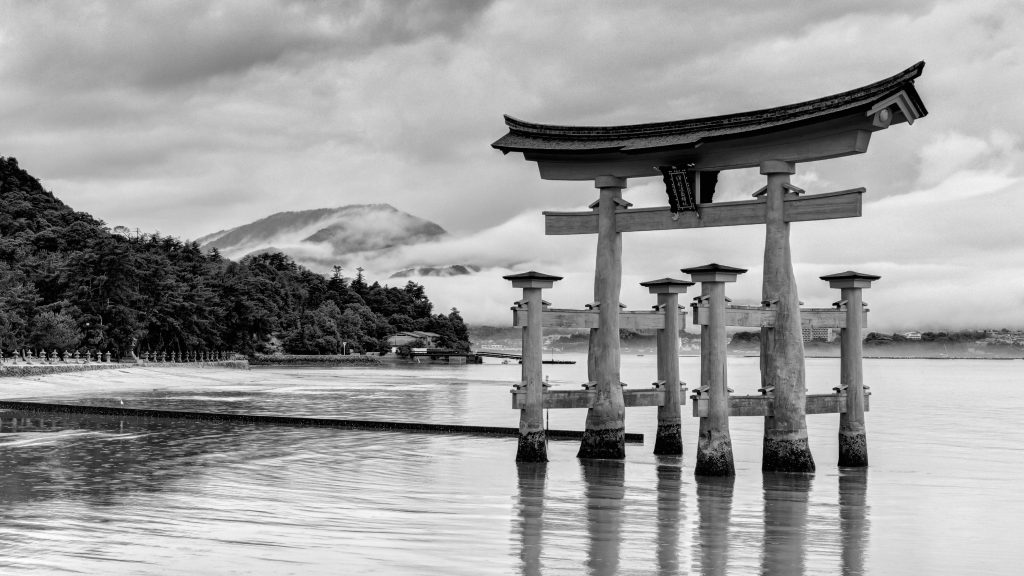Sacred Spaces on Water: Exploring the Power of Water in Spiritual Architecture
The wooden bridge creaked underfoot as Will Hunter approached Itsukushima Shrine in Japan’s Hiroshima Bay. The iconic torii gate, seemingly floating on the surface of the water, glowed orange in the fading light. Will paused, mesmerized by the reflection rippling across the bay. This was not just a gate; it was an entrance into a realm where the boundaries between the earthly and the divine blurred.
“Sacred spaces on water,” he mused, “hold a unique magic.”
A Shinto priest greeted him, explaining the philosophy behind the shrine’s design. “Water is a sacred force,” she said. “It reflects the impermanence of life, a core principle of Shinto. The torii gate isn’t just an entrance—it’s a threshold between the earthly and the divine, a constant reminder of the fluidity of existence.”
As Will explored the shrine, he noticed how the tides transformed the experience. At high tide, the buildings seemed to float, their reflections merging with the shimmering surface of the bay. At low tide, they were grounded, accessible by foot. This duality mirrored the Shinto belief in harmony between nature and human life, a constant dance between stability and impermanence.
Will thought of other sacred spaces on water. He remembered reading about the Golden Temple in Amritsar, India. Surrounded by a man-made pool called the Amrit Sarovar, the temple’s shimmering reflection symbolized spiritual purity. Pilgrims circled the pool, their steps part of a ritual that emphasized cleansing and renewal. The water, in this case, acted as a mirror reflecting the inner journey of the devotee.
In Cambodia, Angkor Wat rose from a vast moat, its reflection creating an illusion of infinite depth. The moat wasn’t just decorative; it symbolized the cosmic ocean, aligning the temple with Hindu cosmology. Water, in this instance, became a metaphor for the boundless and eternal, a reminder of the vastness of the universe and our place within it.
Not all sacred spaces on water were ancient. Will had recently visited the Floating Church on London’s canal network, a contemporary reimagining of sacred architecture. The floating chapel moved between communities, its design combining modern minimalism with a sense of rooted spirituality. This dynamic approach to sacred space reflected the evolving needs of modern society, demonstrating how sacred spaces on water can adapt and remain relevant in a changing world.
By nightfall, as the tide crept higher around Itsukushima Shrine, Will sat on the bridge, sketching the torii gate. He realized that sacred spaces on water weren’t just architectural wonders; they were profound reflections of human spirituality, embodying the interconnectedness of humanity, nature, and the divine.
“On water,” he thought, “sacred spaces become living things, moving with the tides, forever in harmony with the flow of life.”
Learning Points:
- The Significance of Water in Sacred Architecture: Understanding the profound symbolic and spiritual meaning of water in various religious and cultural traditions.
- The Interplay of Architecture and Nature: Exploring how architects have integrated natural elements, particularly water, into sacred spaces to create a sense of awe and reverence.
- The Concept of Impermanence in Sacred Architecture: Examining how the dynamic nature of water, with its ever-changing tides and reflections, can symbolize the impermanence of life and the cyclical nature of existence.
- The Role of Reflection in Sacred Spaces: Understanding how water, as a reflective surface, can amplify the spiritual experience and create a sense of transcendence.
- The Evolution of Sacred Spaces: Exploring how the concept of sacred spaces has evolved over time, integrating modern architectural principles while maintaining their spiritual significance.
Keywords:
- Sacred Space
- Water Architecture
- Religious Architecture
- Spiritual Architecture
- Architecture and Spirituality
- Water Symbolism
- Sacred Geometry
- Environmental Spirituality
- Buddhism
- Hinduism
- Shinto
- Cultural Significance
- Architectural Design
- Travel
- Cultural Studies
This fictional story is set within the dreams of Will Hunter, a character created to explore the intersection of imagination and design. Dive into his dreamscape and discover how storytelling can illuminate real-world lessons in architecture and creativity.
Some of the links on this website may be affiliate links. This means that if you click on the link and make a purchase, we may receive a small commission. We only recommend products and services that we genuinely believe will be beneficial to our readers.





